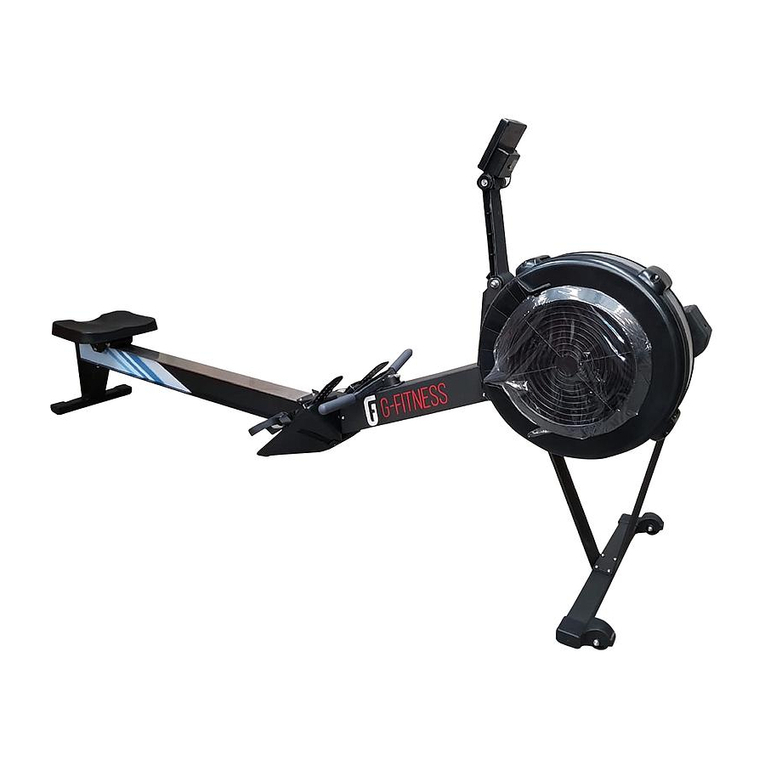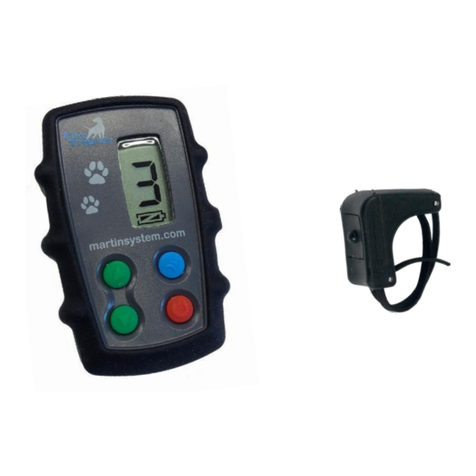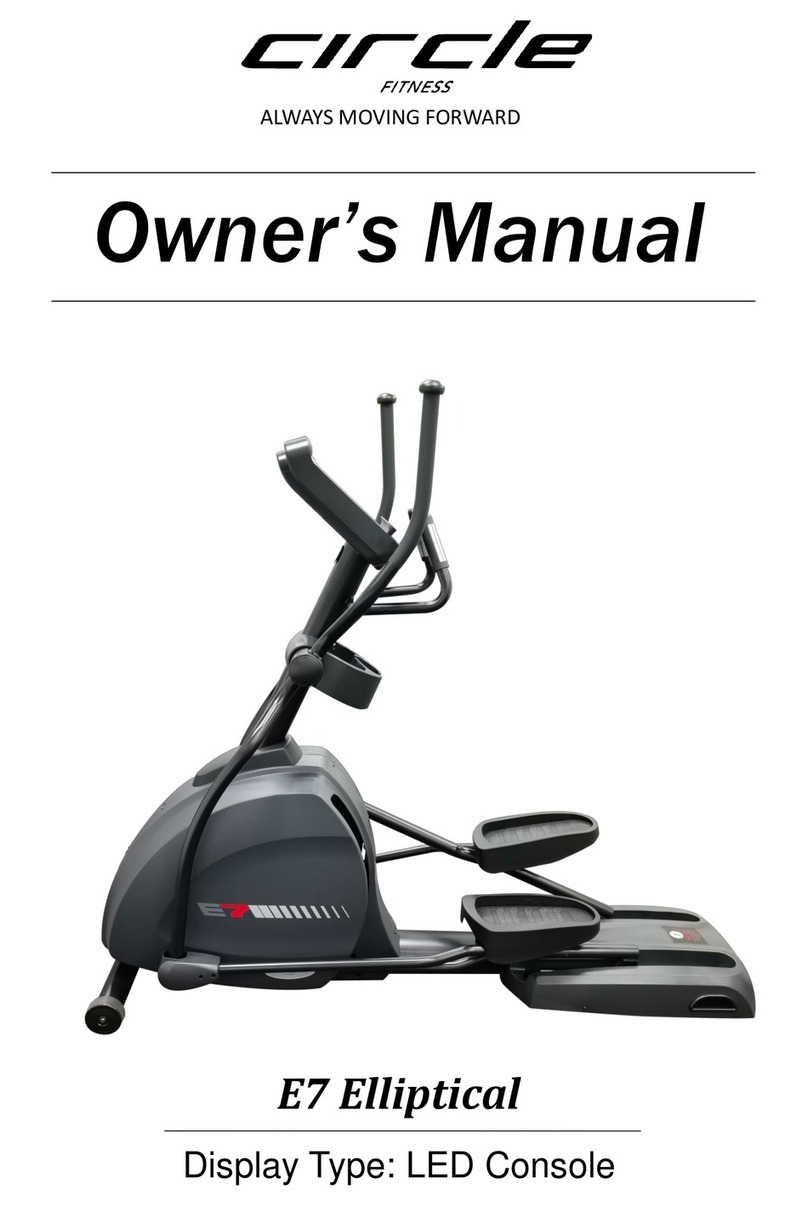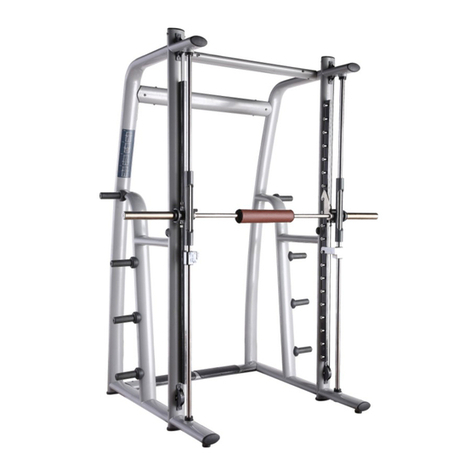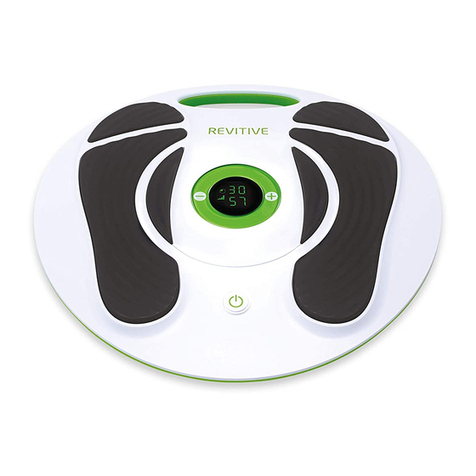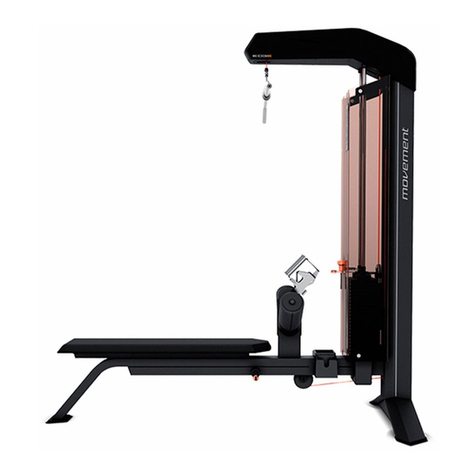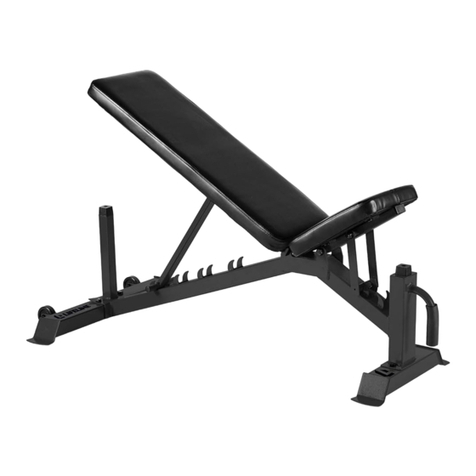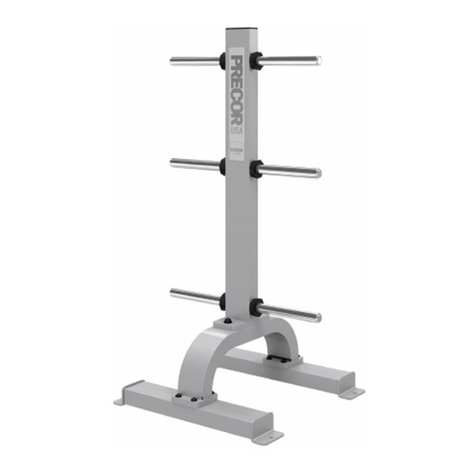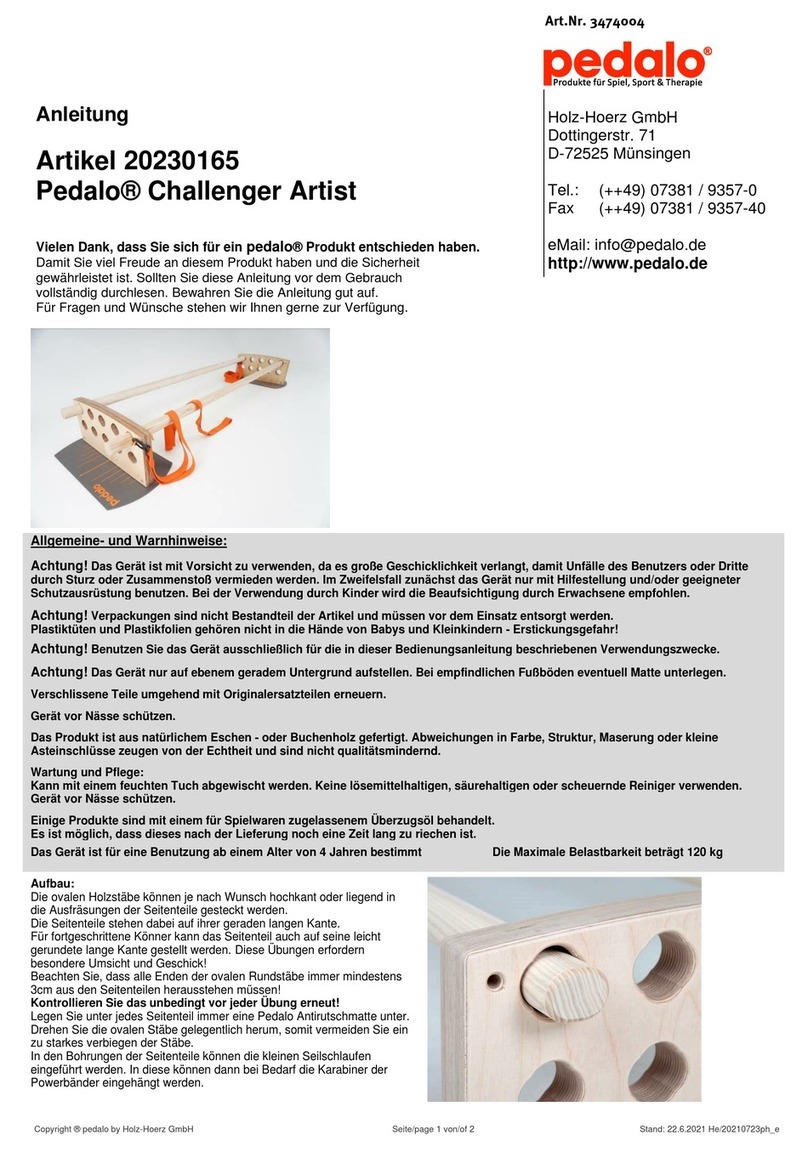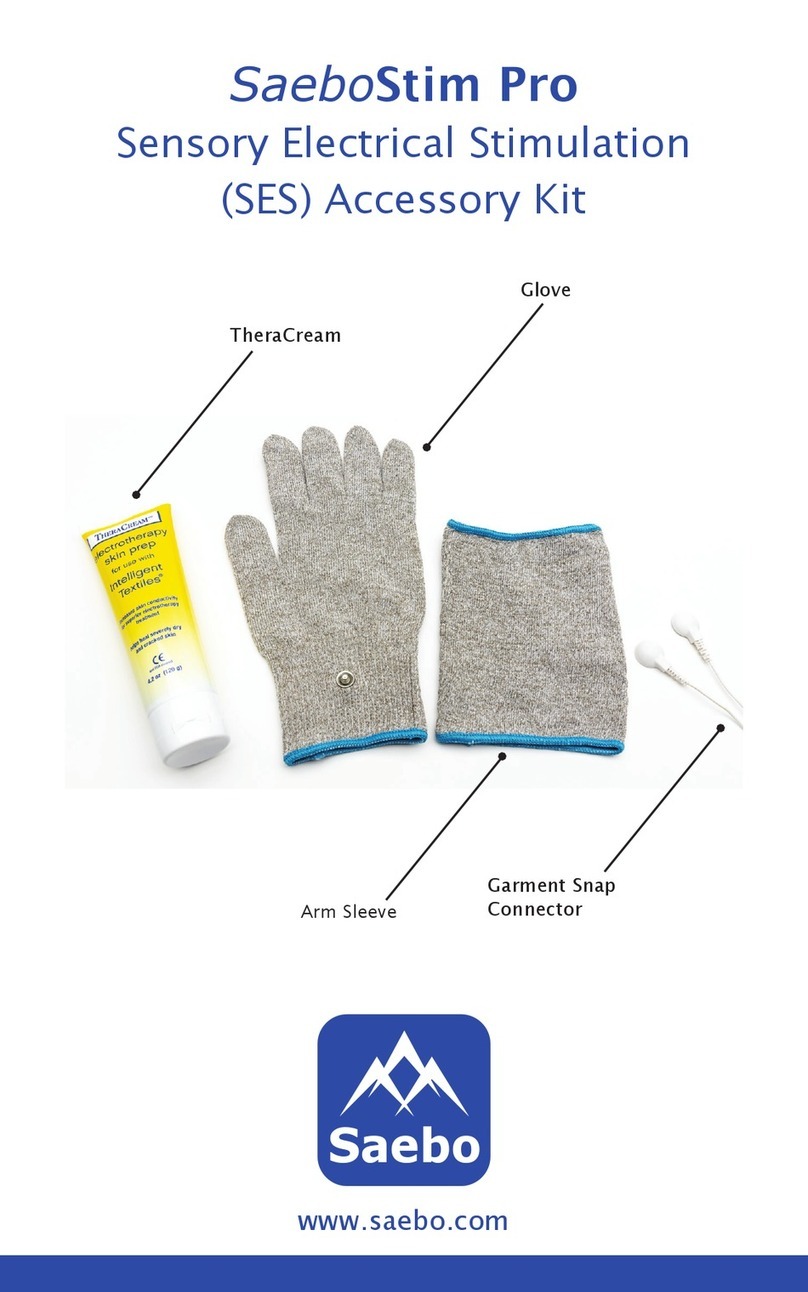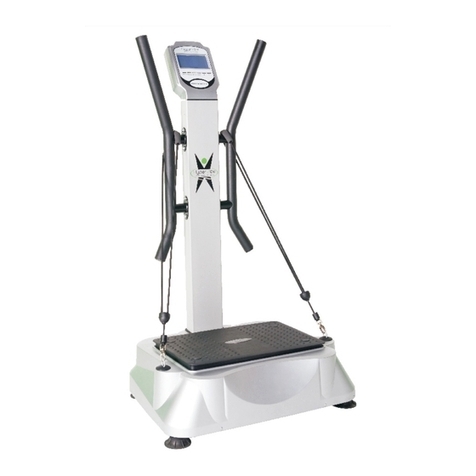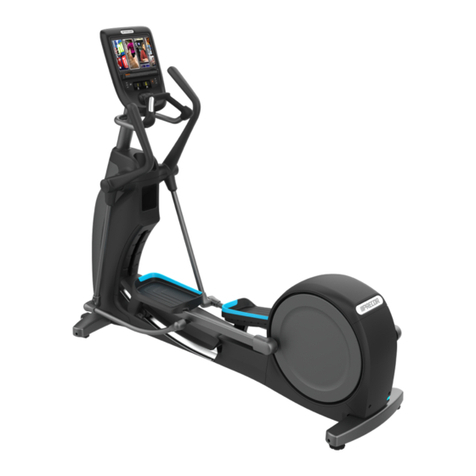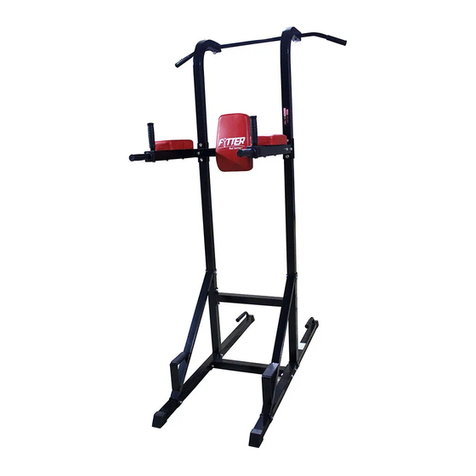Mounting and Dismounting: Thetrampolinemat (bed) is several feet from groundlevel. Jumping off the
trampoline to the ground or any othersurface may result in injury. Jumping onto the trampoline from a roof, deck,
or other object alsorepresents a risk of injury. Smallerchildrenmay needassistance getting up on or down from
the trampoline. Climbcarefully onand off the trampoline. Do notstep onto the springs or the frame pad. Do not
grasp the frame padto pullyourself onto the trampoline.
Striking Frame or Springs:Injury may result from encountering the frame orfalling through the springswhile
jumping or getting on oroff the trampoline. Stay inthe center of the trampolinemat (bed)when jumping. Besure
to keep the frame padin place tocoverthe frame. The framepad is not designed -nor intended tosupport the
weight of the trampolineuser. Do notstep or jumpdirectly. onto the framepad.
LossofControl: Jumperswholosecontrol of their jumpmay landon themat (bed) incorrectly, land onthe
frame or springs orfall off the trampoline. Acontrolled jumpis onewhere the landingisin the samespot as the
take off. Before learning amore difficult jump, the precedingoneshould beperformed consistently undercontrol.
Attempting a jump beyondpresentskilllevels increases the chance of loss of control. To regaincontrol andstop
your jump, bendyourknees sharply whenyou land.
Alcohol or Drug Use: The chanceof injury increases when ajumperhas consumedalcohol ortaken drugs.
Thesesubstances impair aperson's reaction time, judgment, and physicalcoordination.
Encountering Objects: Use of atrampolinewhile other people, pets, or objects areunderneath itwill increase
the chance of injury. Jumpingwhile holding orhavingan object on the trampoline, particularly one that is sharpor
breakable, will increasethe chance of injury. Placing atrampoline toocloseto overhead electrical wires, tree
limbs, or other obstructions can increasethe chanceof injury.
Poor MaintenanceofTrampoline: Jumpers may be injuredif a trampolineis usedwhenit is in poorcondition.
A torn mat (bed), bent frame, brokenspring, or amissing frame pad, for exampleshould bereplaced before
anyoneis allowedto jump. Inspect the trampoline before eachuse.
Weather Conditions: Awet trampolinemat (bed) is tooslippery for safe jumping. Gusty orseverewinds can
cause jumpers to losecontrol. Toreducethe chanceof injury, use the trampolineonly underappropriateweather
conditions.
Limiting Access:To prevent access to the trampoline by unsupervisedsmallchildrenthe access laddershould
always be removedandstored in asecure locationwhen the trampolineis not in use.
TRAMPOLINESAFETY INSTRUCTIONS
Do not use the trampolinewhen underthe influence of drugs or alcohol.
Learn fundamental jumps and body positions thoroughly before tryingmoreadvanced skills.
Review the User's Manual to learn about how to dobasic jumps.
Stop yourbounceby flexingyourknees as your feet come incontactwith the trampoline mat (bed).
Avoidjumpingtoo high orfor too long. Always controlyourjump. Acontrolled jump is onewhere the takeoff and
land spots arethe same.
Focusyoureyes onthe trampolinemat (bed). Failure to dosomay result in aloss of balanceandcontrol.
Take turns jumpingone at atime, and always havesomeonewatchyou.
Climb onand off the trampoline. Do not jump onor off. Do not use the trampolineas a springboardto other
objects.
For further information or additional instructional materials, contact acertified trampoline instructor.
TRAMPOLINEPLACEMENT
A minimum of 7.3meters of overheadclearance is required. Adequate horizontal clearancemust bemaintained
from objects andpossible hazards including electric powerwiring, tree limbs, recreational structures (swing-sets,
swimming pools), and fences.
The trampolinemust beplacedon alevelsurface before use.
There must be noobstructions beneath the trampoline.
Do not place the trampoline nearany other recreational devices orstructures suchas a swimming poolorswing-
set.
.
